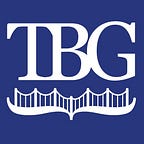How to Be Your Own Consultant: A Nonprofit’s Guide to Tackling Common Challenges
By: Natalie Deng
TBG Insights was created as a platform to provide nonprofit organizations with summaries of trends and strategies accumulated from projects with past clients. To better help your nonprofit organization tackle challenges, I have outlined a basic framework that can be applied to any project objective, so that you may act as your own consultant. Additionally, I took into consideration some of the most common project objectives TBG is asked to work on — capital campaign, social media, and strategies for recruitment — and compiled a list of tried and true resources and recommendations to target specific issues.
Part One: Serving as Your Own Consultant
The basic framework to approach every project is: Reflect, Benchmark, and Implement.
One: Reflect
Reflect means looking internally to analyze current strengths, weaknesses, and areas of improvement. This can be achieved through:
- Internal interviews of employees, stakeholders, and board members
- Analysis of internal data (finances, social media analytics, and existing technologies)
Two: Benchmark
Benchmark means reaching out to similar organizations to inquire about their operations. The steps for this are:
- Create a database of similar organizations to reach out to
- Create an interview guide
- Conduct interviews
- Analyze the most optimal strategies that are also relevant to your organization
Three: Implement
Implement means creating a realistic timeline to implement the strategies identified as the most optimal. The steps for this are as follows:
- Choose leaders and members to spearhead projects
- Establish clear project responsibilities and roles
- Establish quantifiable metrics to measure progress
- Follow up on project progress and adjust accordingly
Part Two: Resources and Recommendations
Capital Campaign:
- Grants. Grants are abundant for nonprofit organizations. A few places TBG recommends looking are: your board’s network, community foundations, and online grant databases such as Foundation Directory Online.
- Monetizing services. Depending on your organization’s service, charging an entrance fee at events and workshops is an easily implementable method of raising capital. In addition, selling merchandise to either participants or people who attend your events is a wonderful way to raise capital as well as market your brand.
- Corporate sponsorships. Corporate Social Responsibility is an increasingly important goal for companies who want to appeal to millennial consumers. Therefore, contacting for-profit companies with a similar mission to your own can be an avenue for sponsorship.
Social Media:
- Instagram. Effective captions that always tie back to the mission of the organization and inform viewers of the purpose of the post. In addition, Linktree is a free tool that optimizes Instagram traffic by providing one link that can lead users to various related platforms
- Youtube. Use the CCC Framework: Create, Collaborate, Curate. Create content that consistently communicates the brand’s mission. Collaborate with relevant industry celebrities and digital influencers. Curate content that invites audience engagement through question and answer formats.
- Brand Ambassadors. These are unpaid employees, alumni, or current participants who regularly promote the organization off and online through sponsored posts.
Recruitment:
- High School Students. In order to graduate from California public high schools, students must complete specified state and local graduation requirements. Thus, high school students are always looking for volunteer opportunities and therefore a viable option for unpaid work.
- College Graduates. College students are always on the lookout for summer or semester-long internships to gain work experience. Attending networking events and career fairs at local colleges and universities near is a great place to capitalize on talent.
- Email campaign. Plug-ins such as Mailchimp and GMass allow for mass email blasts that can be sent to past participants, current employees, and similar organizations to recruit talent.
While this framework is by no means applicable to every project objective, and this list of resources is not exhaustive, this guide will hopefully provide you a starting place for further exploration. Happy consulting from TBG!
